Silent lasers vs. noisy drones: Not today, maybe tomorrow
global.espreso.tv
Thu, 31 Jul 2025 13:55:00 +0300

ContentsStages of creating laser weapons and technological problems in their developmentIn the testing phase: the latest in directed energy weaponsMoney talks: the cost of Western laser weapons systemsWhen it will happen: Prospects for the massive use of lasers in combat conditionsWhen will lasers start taking down Shahed and Geran drones quickly, reliably, and cheaply, and most of all, quietly, unlike machine guns and cannons blasting through a night city? The history of laser weapons makes the answer less than simple.At the turn of the century, rare earth elements added to fiber optics transformed laser tech. Lasers became simple and powerful enough to be used as weapons with a "kinetic" effect, like bullets and shells. But that’s still not enough.To shoot down drones as reliably and affordably as bullets or shells, lasers will likely need low-cost, reliable 4D targeting systems. These would track a target’s position (3D) and predict its movement. That’s hard to do without compact, affordable autonomous AI.Another big issue with current laser systems aimed at drones is cost. Compared to other weapons, laser platforms are expensive, and if a drone gets through and hits the laser unit, the financial loss could outweigh the low cost of firing the beam.So when will it happen? The answer is: not today. But at this rate of tech development, maybe tomorrow. Here’s why.Stages of creating laser weapons and technological problems in their developmentWeapons based on directed energy, especially lasers, have been in development for decades, backed by billions in investments and notable breakthroughs. In the early 2000s, the U.S. built the YAL-1 airborne laser system on a Boeing 747. It successfully intercepted ballistic missiles during the initial stage of flight. But this megawatt-class chemical laser, weighing up to 20 tons and offering low reliability in actual hits, turned out to be too complex and costly. The project was shut down in 2012.Around the same time, solid-state fiber lasers entered the market. They offered a much better power-to-weight ratio, especially in compact formats. These lasers generate radiation using laser diodes and amplify it through optical fibers doped with rare-earth elements like ytterbium, erbium, and thulium. This fiber-optic tech was first designed for ultra-fast communication systems, mainly military ones. But since the 1990s, it’s been clear they could power a new generation of combat-ready lasers.A laser beam hits the target instantly, but to do damage like a bullet or shell, it needs to stay locked on a small area of the target. Only then can it deliver the power density needed to burn through materials. For example: 100 W/cm² for a few seconds removes hair; 1 kW/cm² ignites wood; 10 kW/cm² melts aluminum; and 100 kW/cm² destroys steel or titanium.For context: a 5.45 mm bullet striking a drone delivers a power density of around 10 megawatts/cm², thousands of times more than what's needed to melt aluminum. But that burst lasts just milliseconds. If spread out over a full second, similar damage can be done using 10 kW/cm², the kind of power current lasers can deliver.To focus on distant targets, a combat laser works like a telescope in reverse: instead of observing a far-off object, it shines on it. That’s why modern military lasers look like oversized telescopes, around 300 mm in diameter, bigger than heavy artillery, with a short barrel of about a meter.Still, even a 100 kW laser struggles to damage steel or titanium from afar. To do so, all that energy must be concentrated on a 1 cm² spot from several kilometers away, a realistic combat range. That kind of focus isn’t achievable in labs yet, let alone in combat. In the field, a laser still loses out to an anti-tank missile. Sure, in industrial settings, a laser just centimeters away can slice metal, but that’s a different story.What these lasers, and their optics and control systems, can realistically do in combat is destroy drones made from plastic, wood, or light aluminum. These materials are cheap and weak, and their vulnerability is part of what makes drones affordable. If drones become faster and tougher, they’ll lose that price advantage.Missiles and drones designed to take out other drones can work well, especially with AI-based targeting systems. But they come with a major drawback: cost. Often, they’re more expensive than the drones they destroy. The Israeli Iron Dome system offers a workaround: it filters targets early and ignores those heading toward empty desert. That works for basic Iranian proxy rockets, which are cheap, inaccurate, and unmaneuverable. But it doesn’t work with drones. Cheap decoys are hard to tell apart from pricier strike drones. And even with good AI, it’s tough to predict where a drone will end up.On the other hand, a cheap bullet or shell, unlike a missile or homing drone, needs extremely precise aiming, especially considering the target’s movement. For now, that level of accuracy isn’t possible. The night buzz of Russian attack drones and the gunfire from Ukrainian mobile air defense teams chasing them can keep entire cities on edge for hours. To land a hit, the drone has to be spotted in the airspace, its path predicted, and the shell fired in such a way that, ideally, pre-programmed at the barrel exit to explode at a specific range and offset aiming errors, it meets the drone within seconds. Human reflexes, instinct, and coordination aren’t enough for this. You need automatic 4D targeting (location plus movement), likely powered by AI.Lasers have one clear edge over artillery: silence. But to take down a drone, they also need that same 4D precision. The laser optics must be locked onto the target, focused at the right distance, and held steadily, all while adjusting to movement. That’s no easier than guiding an anti-drone cannon and will also likely require compact, affordable AI systems.Another promising option in directed energy weapons is microwave-based electromagnetic weapons. Instead of hitting the drone’s body, which microwaves pass through, they destroy its electronics with short (microsecond), high-power (tens to hundreds of megawatts) pulses in the hundreds of megahertz to gigahertz range. Like lasers, they use electromagnetic radiation, but the method is different: energy is generated by an electric discharge and released through directional antennas. It’s “lethal electronic warfare”: it doesn’t matter how the drone is controlled, if the system is electronic, it can be disabled.Microwave weapons might not need pinpoint accuracy. You can aim them at a swarm. But that kind of wide-area effect can show up on enemy radars and may interfere with your own electronics. Plus, it’s much easier to shield a drone’s electronics from a microwave pulse than to protect it from a laser beam, unless you want to make the design a lot more complex and expensive.Overall, laser and microwave weapons are getting close to real-world use. They’re already competitive options in anti-drone defense (C-UAS), alongside missiles, drones, cannons, machine guns, and DIY tools. Their big selling point: ultra-cheap “shots” from a very expensive system.That also makes them risky for standalone combat use, losing the device would be too costly. But as part of hybrid systems, alongside missiles, shells, and jamming tools, lasers could boost drone defense in the near future.In the testing phase: the latest in directed energy weaponsLaser and microwave "cannons" have left the labs but haven’t yet made it to the battlefield. They’re being tested at ranges and were trialed during U.S. and Israeli operations in the Middle East. The results are still unclear. But several systems already exist in near-combat-ready research versions.The Israeli Iron Beam is a mobile laser "cannon" with a power output of over 100 kW. It’s mounted on a military tractor with its own power supply and fire control system. During Israel’s war with Iranian proxies, Swords of Iron (2023–2025), reports said Iron Beam successfully intercepted dozens of loitering munitions and quadcopters. However, no combat use was reported during Israel’s 2025 Operation Rising Lion against Iran, despite the scale of the airstrikes.Iron Beam reportedly destroys a drone’s hull at up to 7 km, with a dwell time of 3–5 seconds. A lower-power prototype was used earlier. But scaling remains a challenge. Full deployment is expected after 2026.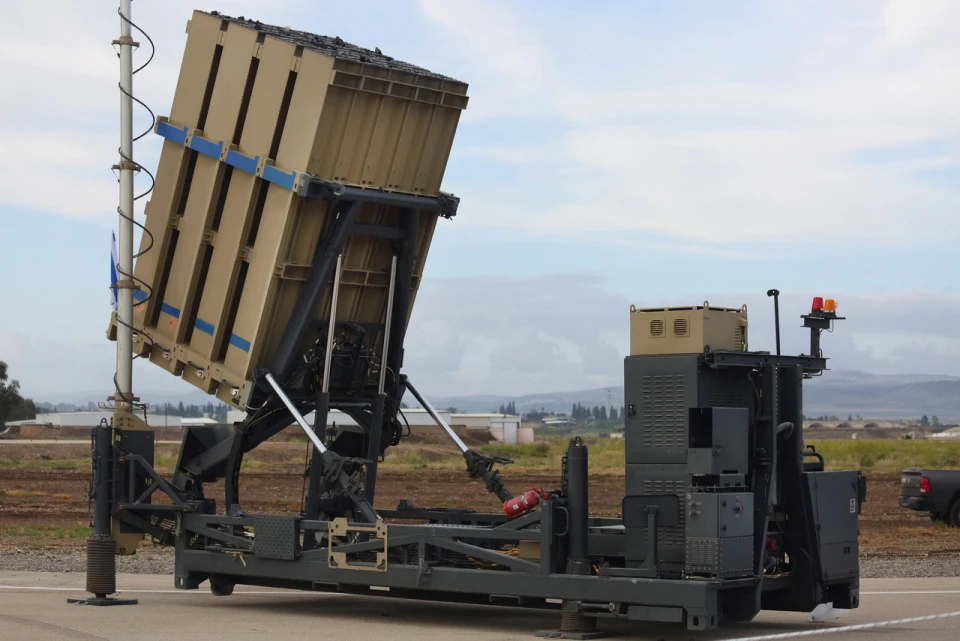 The U.S.-made DE M-SHORAD (Directed Energy Maneuver–Short Range Air Defense) is a 50 kW fiber laser mounted on a Stryker 8×8 armored vehicle in infantry carrier configuration. It’s built for tactical mobility and autonomous operation.According to U.S. Army tests, DE M-SHORAD can hit tactical drones at distances up to 5 km, with a beam retention time of 4–7 seconds. It saw limited deployment and combat testing in the Middle East, where results fell short of test-range performance. The key issue is overheating after repeated use. Wider deployment is expected after 2025.
The U.S.-made DE M-SHORAD (Directed Energy Maneuver–Short Range Air Defense) is a 50 kW fiber laser mounted on a Stryker 8×8 armored vehicle in infantry carrier configuration. It’s built for tactical mobility and autonomous operation.According to U.S. Army tests, DE M-SHORAD can hit tactical drones at distances up to 5 km, with a beam retention time of 4–7 seconds. It saw limited deployment and combat testing in the Middle East, where results fell short of test-range performance. The key issue is overheating after repeated use. Wider deployment is expected after 2025.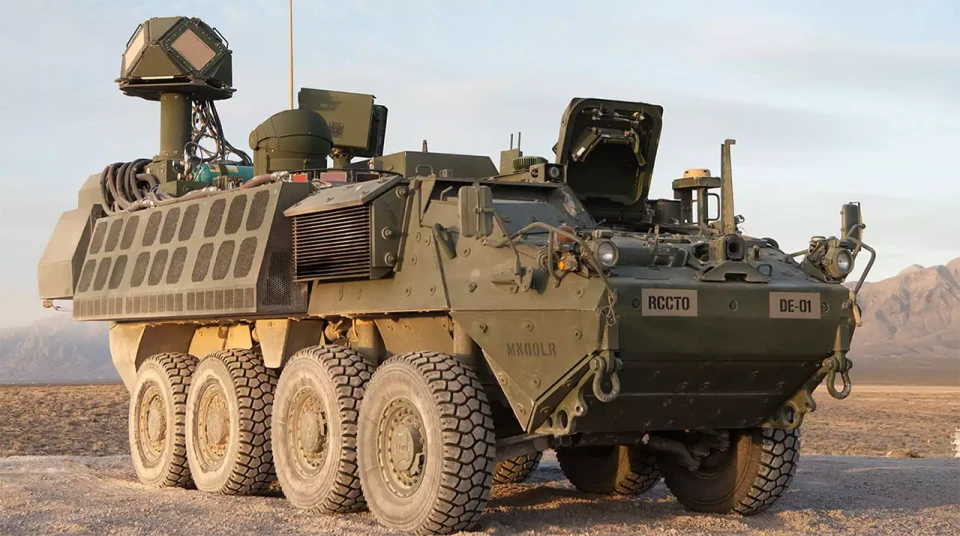 The British DragonFire is a 50 kW fiber laser mounted on a platform with active optical stabilization. Its first deployment is planned with the Royal Navy. Reports say tests confirmed its ability to hit mini-drones at 2–4 km, with a dwell time of 3–5 seconds. Despite working as intended, it hasn’t entered service yet. Key issues are weather sensitivity and calibration. Readiness is expected after 2026.
The British DragonFire is a 50 kW fiber laser mounted on a platform with active optical stabilization. Its first deployment is planned with the Royal Navy. Reports say tests confirmed its ability to hit mini-drones at 2–4 km, with a dwell time of 3–5 seconds. Despite working as intended, it hasn’t entered service yet. Key issues are weather sensitivity and calibration. Readiness is expected after 2026.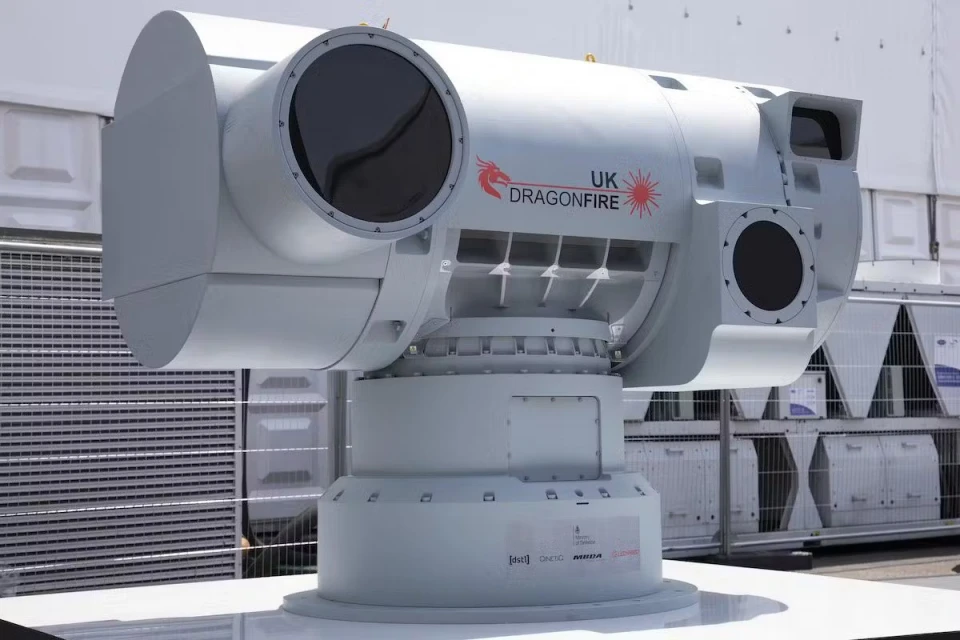 The LOCUST (Low-Cost UAV Swarming Technology) system is a modular C-UAS setup combining 20–50 kW BlueHalo lasers, electronic warfare, and kinetic interceptors in one combat unit. It can be mounted on Stryker vehicles, other platforms, or even rooftops. According to the manufacturer and Pentagon demo footage, LOCUST can destroy small drones at 0.5–1.5 km, with a beam focus time of 2–4 seconds. Its main strength is a layered system, where the laser supports kinetic weapons and gains extra protection. Weak spots include control issues and integration with platforms like the Stryker. Deployment is expected after 2025.
The LOCUST (Low-Cost UAV Swarming Technology) system is a modular C-UAS setup combining 20–50 kW BlueHalo lasers, electronic warfare, and kinetic interceptors in one combat unit. It can be mounted on Stryker vehicles, other platforms, or even rooftops. According to the manufacturer and Pentagon demo footage, LOCUST can destroy small drones at 0.5–1.5 km, with a beam focus time of 2–4 seconds. Its main strength is a layered system, where the laser supports kinetic weapons and gains extra protection. Weak spots include control issues and integration with platforms like the Stryker. Deployment is expected after 2025.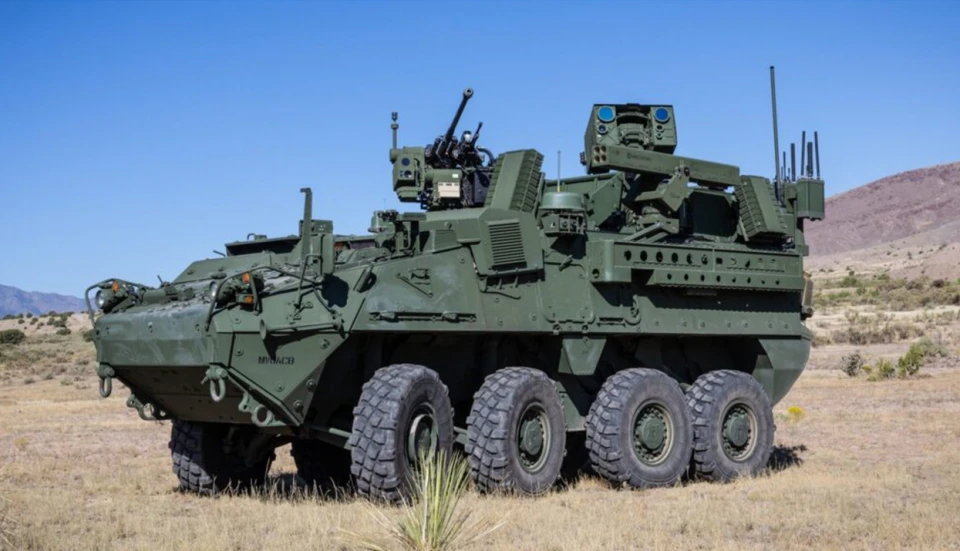 The THOR (Tactical High Power Operational Responder) system uses high-power microwave pulses (~100 MW peak power) to disable swarms of drones by frying their electronics. THOR fits inside a standard shipping container. In military tests, it reportedly neutralized commercial drone swarms in under 1 second across areas up to 1 km². But its performance in harsher conditions and the risks of its indiscriminate EMP effect are still under review. Readiness is expected after 2026.
The THOR (Tactical High Power Operational Responder) system uses high-power microwave pulses (~100 MW peak power) to disable swarms of drones by frying their electronics. THOR fits inside a standard shipping container. In military tests, it reportedly neutralized commercial drone swarms in under 1 second across areas up to 1 km². But its performance in harsher conditions and the risks of its indiscriminate EMP effect are still under review. Readiness is expected after 2026.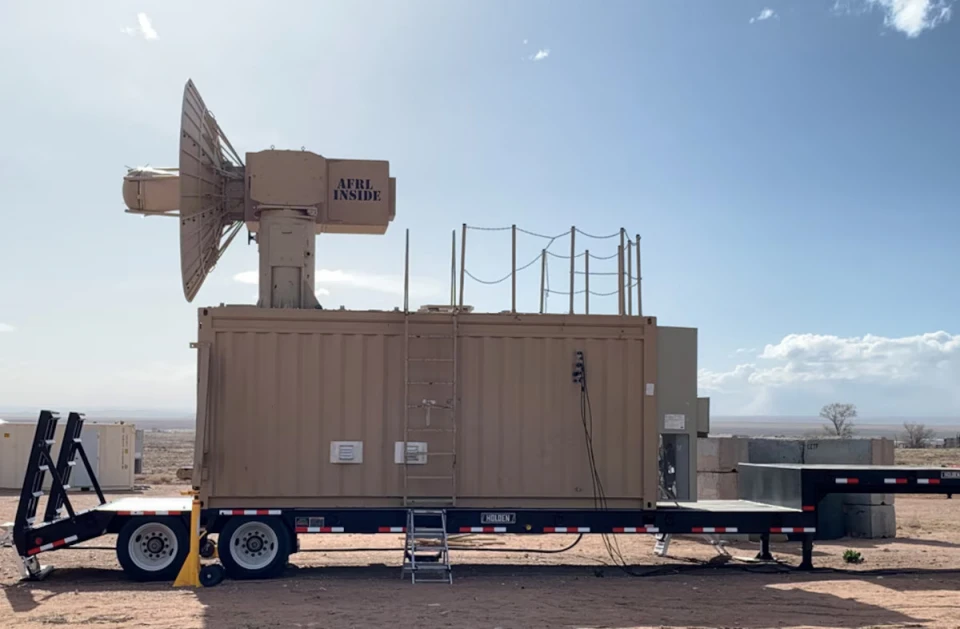 Money talks: the cost of Western laser weapons systemsAmong anti-drone systems (C-UAS – Counter-Unmanned Aircraft Systems), the German Gepard self-propelled unit on the Leopard 1 tank chassis stands out as one of the most effective against Shahed-type loitering munitions. It uses twin 35mm automatic cannons, with each shot costing about $100. A full burst to hit a target runs $3,000–4,000. The unit itself costs between $1–2 million. Using Gepard makes economic sense against Shahed drones, which cost $20,000–50,000, but it’s becoming less effective against smaller FPV drones priced under $2,000.The American C-UAS Coyote system uses a missile to destroy drones. Its latest versions cost around $100,000 per missile and deliver a precise kinetic strike. The system is reliable, but too expensive for regular use, even against large strike drones. It’s meant to guard high-value targets. The launcher is mounted on a light armored 4x4 vehicle and usually holds four missiles. Its price isn’t disclosed but likely matches the cost of Gepard. Most of the expense comes from the missiles themselves.Improvised or budget solutions, like 12-gauge shotguns with collimator sights, machine guns on vehicles, or remote-controlled turrets with regular small arms, cost only a few dollars per shot. But their range is limited to about 100 meters. They rely on direct line of sight and manual control. Still, they’re widely used in the “dead zone” where drones slip through other defenses. Their value is in short-range local defense, especially when integrated with spotters, sensors, or auto-detection tools.Laser and microwave weapons offer shot costs comparable to improvised gear. Systems like Israel’s Iron Beam or the US DE M-SHORAD claim a cost of about $1 per shot with short guidance. Longer guidance pushes the price to $10, still in the ballpark of conventional weapons.But the systems themselves cost $10–20 million, on par with front-line aircraft. In stand-alone use, laser systems can be more vulnerable than Gepard or Coyote. That makes them risky to deploy independently in combat. Their effectiveness is limited, chances of loss are high, and recovery is costly. Lasers may work for protecting critical infrastructure, but they’ll need the same level of protection as fighter jets at their bases. This creates a major problem in using them on the battlefield.The gap between the low cost of a laser "shot" (like a bullet) and the high cost of the system (like an aircraft) shifts the focus away from using lasers alone. Instead, they’re better used as part of layered combat systems where the laser is just one tool in the chain.Combined combat modules like LOCUST suggest a move toward the US multi-domain task force (MDTF) concept. In this setup, universal launchers can carry missiles for long-range strikes, anti-ship warfare, air defense, and missile defense. These modular systems offer both offensive capability and self-defense. In that context, even expensive laser systems can make sense in real combat.When it will happen: Prospects for the massive use of lasers in combat conditionsDespite impressive field test results — when, according to insiders, the area was “strewn with downed drones” — the combat use of laser weapons in the Middle East in 2023–2024 was underwhelming and largely unnoticed. Tests revealed key limitations: lower performance in real combat, sensitivity to environmental factors like rain, dust, and smoke, difficulty in holding the beam on target (dwell time), issues with beam stability and overheating. Even the most advanced systems — Iron Beam, DE M-SHORAD, and DragonFire — struggle to maintain enough beam power density on a moving target under combat-like conditions.Lasers face a core contradiction: the cost of a single shot is extremely low (under $10), while the systems themselves are extremely expensive (over $10 million per unit). This mismatch limits their tactical flexibility, they’re more suited to defending fixed sites alongside other systems. In mobile scenarios under fire, a laser will likely need to be built into a full combat module or operate as part of a fire battery with more versatile and self-protective systems.Power supply and cooling remain major issues. Combat laser platforms need advanced heat dissipation systems, similar to those used in high-speed fiber-optic networks under heavy load. This adds to the challenge of precision aiming and beam dwell time. If the beam is active too long, the system overheats. For mobile platforms like the Stryker, this is a serious technical problem. Several failed long shots can force a shutdown for cooling.A competing solution is high-energy microwave systems like THOR. These don’t burn through drones, they disable electronics using powerful, split-second electromagnetic pulses. They’re less dependent on perfect aim and weather conditions, and they can target drone swarms. But their range is short (under 1 km), and there’s a risk of damaging friendly equipment.Despite the flaws, directed energy weapons are edging closer to practical battlefield use, mainly as part of layered anti-drone defenses. The goal isn’t to replace missiles, guns, or EW, but to integrate them. LOCUST system developers said even a 30% increase in kinetic kill efficiency justifies adding a laser to a combat module.The first operational combat lasers could be deployed at high-value sites within a year or two. The most realistic candidates are still Iron Beam, DE M-SHORAD, and hybrid platforms like LOCUST.But large-scale laser deployment in actual combat will need another tech leap: cheaper systems, better targeting and beam control, shorter dwell time, and heat resistance. This depends on advances in fiber laser tech, mechanical targeting, optical focusing, and autonomous AI capable of tracking a target during the full engagement.That next leap might not happen soon or it might coincide with the start of rare earth element extraction in Ukraine, without which combat lasers wouldn’t be possible at all.This article was produced in collaboration with the Consortium for Defense Information (CDI), a project uniting Ukrainian analytical and research groups to boost information and analytical support in national security, defense, and geopolitics.
Money talks: the cost of Western laser weapons systemsAmong anti-drone systems (C-UAS – Counter-Unmanned Aircraft Systems), the German Gepard self-propelled unit on the Leopard 1 tank chassis stands out as one of the most effective against Shahed-type loitering munitions. It uses twin 35mm automatic cannons, with each shot costing about $100. A full burst to hit a target runs $3,000–4,000. The unit itself costs between $1–2 million. Using Gepard makes economic sense against Shahed drones, which cost $20,000–50,000, but it’s becoming less effective against smaller FPV drones priced under $2,000.The American C-UAS Coyote system uses a missile to destroy drones. Its latest versions cost around $100,000 per missile and deliver a precise kinetic strike. The system is reliable, but too expensive for regular use, even against large strike drones. It’s meant to guard high-value targets. The launcher is mounted on a light armored 4x4 vehicle and usually holds four missiles. Its price isn’t disclosed but likely matches the cost of Gepard. Most of the expense comes from the missiles themselves.Improvised or budget solutions, like 12-gauge shotguns with collimator sights, machine guns on vehicles, or remote-controlled turrets with regular small arms, cost only a few dollars per shot. But their range is limited to about 100 meters. They rely on direct line of sight and manual control. Still, they’re widely used in the “dead zone” where drones slip through other defenses. Their value is in short-range local defense, especially when integrated with spotters, sensors, or auto-detection tools.Laser and microwave weapons offer shot costs comparable to improvised gear. Systems like Israel’s Iron Beam or the US DE M-SHORAD claim a cost of about $1 per shot with short guidance. Longer guidance pushes the price to $10, still in the ballpark of conventional weapons.But the systems themselves cost $10–20 million, on par with front-line aircraft. In stand-alone use, laser systems can be more vulnerable than Gepard or Coyote. That makes them risky to deploy independently in combat. Their effectiveness is limited, chances of loss are high, and recovery is costly. Lasers may work for protecting critical infrastructure, but they’ll need the same level of protection as fighter jets at their bases. This creates a major problem in using them on the battlefield.The gap between the low cost of a laser "shot" (like a bullet) and the high cost of the system (like an aircraft) shifts the focus away from using lasers alone. Instead, they’re better used as part of layered combat systems where the laser is just one tool in the chain.Combined combat modules like LOCUST suggest a move toward the US multi-domain task force (MDTF) concept. In this setup, universal launchers can carry missiles for long-range strikes, anti-ship warfare, air defense, and missile defense. These modular systems offer both offensive capability and self-defense. In that context, even expensive laser systems can make sense in real combat.When it will happen: Prospects for the massive use of lasers in combat conditionsDespite impressive field test results — when, according to insiders, the area was “strewn with downed drones” — the combat use of laser weapons in the Middle East in 2023–2024 was underwhelming and largely unnoticed. Tests revealed key limitations: lower performance in real combat, sensitivity to environmental factors like rain, dust, and smoke, difficulty in holding the beam on target (dwell time), issues with beam stability and overheating. Even the most advanced systems — Iron Beam, DE M-SHORAD, and DragonFire — struggle to maintain enough beam power density on a moving target under combat-like conditions.Lasers face a core contradiction: the cost of a single shot is extremely low (under $10), while the systems themselves are extremely expensive (over $10 million per unit). This mismatch limits their tactical flexibility, they’re more suited to defending fixed sites alongside other systems. In mobile scenarios under fire, a laser will likely need to be built into a full combat module or operate as part of a fire battery with more versatile and self-protective systems.Power supply and cooling remain major issues. Combat laser platforms need advanced heat dissipation systems, similar to those used in high-speed fiber-optic networks under heavy load. This adds to the challenge of precision aiming and beam dwell time. If the beam is active too long, the system overheats. For mobile platforms like the Stryker, this is a serious technical problem. Several failed long shots can force a shutdown for cooling.A competing solution is high-energy microwave systems like THOR. These don’t burn through drones, they disable electronics using powerful, split-second electromagnetic pulses. They’re less dependent on perfect aim and weather conditions, and they can target drone swarms. But their range is short (under 1 km), and there’s a risk of damaging friendly equipment.Despite the flaws, directed energy weapons are edging closer to practical battlefield use, mainly as part of layered anti-drone defenses. The goal isn’t to replace missiles, guns, or EW, but to integrate them. LOCUST system developers said even a 30% increase in kinetic kill efficiency justifies adding a laser to a combat module.The first operational combat lasers could be deployed at high-value sites within a year or two. The most realistic candidates are still Iron Beam, DE M-SHORAD, and hybrid platforms like LOCUST.But large-scale laser deployment in actual combat will need another tech leap: cheaper systems, better targeting and beam control, shorter dwell time, and heat resistance. This depends on advances in fiber laser tech, mechanical targeting, optical focusing, and autonomous AI capable of tracking a target during the full engagement.That next leap might not happen soon or it might coincide with the start of rare earth element extraction in Ukraine, without which combat lasers wouldn’t be possible at all.This article was produced in collaboration with the Consortium for Defense Information (CDI), a project uniting Ukrainian analytical and research groups to boost information and analytical support in national security, defense, and geopolitics.
 The U.S.-made DE M-SHORAD (Directed Energy Maneuver–Short Range Air Defense) is a 50 kW fiber laser mounted on a Stryker 8×8 armored vehicle in infantry carrier configuration. It’s built for tactical mobility and autonomous operation.According to U.S. Army tests, DE M-SHORAD can hit tactical drones at distances up to 5 km, with a beam retention time of 4–7 seconds. It saw limited deployment and combat testing in the Middle East, where results fell short of test-range performance. The key issue is overheating after repeated use. Wider deployment is expected after 2025.
The U.S.-made DE M-SHORAD (Directed Energy Maneuver–Short Range Air Defense) is a 50 kW fiber laser mounted on a Stryker 8×8 armored vehicle in infantry carrier configuration. It’s built for tactical mobility and autonomous operation.According to U.S. Army tests, DE M-SHORAD can hit tactical drones at distances up to 5 km, with a beam retention time of 4–7 seconds. It saw limited deployment and combat testing in the Middle East, where results fell short of test-range performance. The key issue is overheating after repeated use. Wider deployment is expected after 2025. The British DragonFire is a 50 kW fiber laser mounted on a platform with active optical stabilization. Its first deployment is planned with the Royal Navy. Reports say tests confirmed its ability to hit mini-drones at 2–4 km, with a dwell time of 3–5 seconds. Despite working as intended, it hasn’t entered service yet. Key issues are weather sensitivity and calibration. Readiness is expected after 2026.
The British DragonFire is a 50 kW fiber laser mounted on a platform with active optical stabilization. Its first deployment is planned with the Royal Navy. Reports say tests confirmed its ability to hit mini-drones at 2–4 km, with a dwell time of 3–5 seconds. Despite working as intended, it hasn’t entered service yet. Key issues are weather sensitivity and calibration. Readiness is expected after 2026. The LOCUST (Low-Cost UAV Swarming Technology) system is a modular C-UAS setup combining 20–50 kW BlueHalo lasers, electronic warfare, and kinetic interceptors in one combat unit. It can be mounted on Stryker vehicles, other platforms, or even rooftops. According to the manufacturer and Pentagon demo footage, LOCUST can destroy small drones at 0.5–1.5 km, with a beam focus time of 2–4 seconds. Its main strength is a layered system, where the laser supports kinetic weapons and gains extra protection. Weak spots include control issues and integration with platforms like the Stryker. Deployment is expected after 2025.
The LOCUST (Low-Cost UAV Swarming Technology) system is a modular C-UAS setup combining 20–50 kW BlueHalo lasers, electronic warfare, and kinetic interceptors in one combat unit. It can be mounted on Stryker vehicles, other platforms, or even rooftops. According to the manufacturer and Pentagon demo footage, LOCUST can destroy small drones at 0.5–1.5 km, with a beam focus time of 2–4 seconds. Its main strength is a layered system, where the laser supports kinetic weapons and gains extra protection. Weak spots include control issues and integration with platforms like the Stryker. Deployment is expected after 2025. The THOR (Tactical High Power Operational Responder) system uses high-power microwave pulses (~100 MW peak power) to disable swarms of drones by frying their electronics. THOR fits inside a standard shipping container. In military tests, it reportedly neutralized commercial drone swarms in under 1 second across areas up to 1 km². But its performance in harsher conditions and the risks of its indiscriminate EMP effect are still under review. Readiness is expected after 2026.
The THOR (Tactical High Power Operational Responder) system uses high-power microwave pulses (~100 MW peak power) to disable swarms of drones by frying their electronics. THOR fits inside a standard shipping container. In military tests, it reportedly neutralized commercial drone swarms in under 1 second across areas up to 1 km². But its performance in harsher conditions and the risks of its indiscriminate EMP effect are still under review. Readiness is expected after 2026. Money talks: the cost of Western laser weapons systemsAmong anti-drone systems (C-UAS – Counter-Unmanned Aircraft Systems), the German Gepard self-propelled unit on the Leopard 1 tank chassis stands out as one of the most effective against Shahed-type loitering munitions. It uses twin 35mm automatic cannons, with each shot costing about $100. A full burst to hit a target runs $3,000–4,000. The unit itself costs between $1–2 million. Using Gepard makes economic sense against Shahed drones, which cost $20,000–50,000, but it’s becoming less effective against smaller FPV drones priced under $2,000.The American C-UAS Coyote system uses a missile to destroy drones. Its latest versions cost around $100,000 per missile and deliver a precise kinetic strike. The system is reliable, but too expensive for regular use, even against large strike drones. It’s meant to guard high-value targets. The launcher is mounted on a light armored 4x4 vehicle and usually holds four missiles. Its price isn’t disclosed but likely matches the cost of Gepard. Most of the expense comes from the missiles themselves.Improvised or budget solutions, like 12-gauge shotguns with collimator sights, machine guns on vehicles, or remote-controlled turrets with regular small arms, cost only a few dollars per shot. But their range is limited to about 100 meters. They rely on direct line of sight and manual control. Still, they’re widely used in the “dead zone” where drones slip through other defenses. Their value is in short-range local defense, especially when integrated with spotters, sensors, or auto-detection tools.Laser and microwave weapons offer shot costs comparable to improvised gear. Systems like Israel’s Iron Beam or the US DE M-SHORAD claim a cost of about $1 per shot with short guidance. Longer guidance pushes the price to $10, still in the ballpark of conventional weapons.But the systems themselves cost $10–20 million, on par with front-line aircraft. In stand-alone use, laser systems can be more vulnerable than Gepard or Coyote. That makes them risky to deploy independently in combat. Their effectiveness is limited, chances of loss are high, and recovery is costly. Lasers may work for protecting critical infrastructure, but they’ll need the same level of protection as fighter jets at their bases. This creates a major problem in using them on the battlefield.The gap between the low cost of a laser "shot" (like a bullet) and the high cost of the system (like an aircraft) shifts the focus away from using lasers alone. Instead, they’re better used as part of layered combat systems where the laser is just one tool in the chain.Combined combat modules like LOCUST suggest a move toward the US multi-domain task force (MDTF) concept. In this setup, universal launchers can carry missiles for long-range strikes, anti-ship warfare, air defense, and missile defense. These modular systems offer both offensive capability and self-defense. In that context, even expensive laser systems can make sense in real combat.When it will happen: Prospects for the massive use of lasers in combat conditionsDespite impressive field test results — when, according to insiders, the area was “strewn with downed drones” — the combat use of laser weapons in the Middle East in 2023–2024 was underwhelming and largely unnoticed. Tests revealed key limitations: lower performance in real combat, sensitivity to environmental factors like rain, dust, and smoke, difficulty in holding the beam on target (dwell time), issues with beam stability and overheating. Even the most advanced systems — Iron Beam, DE M-SHORAD, and DragonFire — struggle to maintain enough beam power density on a moving target under combat-like conditions.Lasers face a core contradiction: the cost of a single shot is extremely low (under $10), while the systems themselves are extremely expensive (over $10 million per unit). This mismatch limits their tactical flexibility, they’re more suited to defending fixed sites alongside other systems. In mobile scenarios under fire, a laser will likely need to be built into a full combat module or operate as part of a fire battery with more versatile and self-protective systems.Power supply and cooling remain major issues. Combat laser platforms need advanced heat dissipation systems, similar to those used in high-speed fiber-optic networks under heavy load. This adds to the challenge of precision aiming and beam dwell time. If the beam is active too long, the system overheats. For mobile platforms like the Stryker, this is a serious technical problem. Several failed long shots can force a shutdown for cooling.A competing solution is high-energy microwave systems like THOR. These don’t burn through drones, they disable electronics using powerful, split-second electromagnetic pulses. They’re less dependent on perfect aim and weather conditions, and they can target drone swarms. But their range is short (under 1 km), and there’s a risk of damaging friendly equipment.Despite the flaws, directed energy weapons are edging closer to practical battlefield use, mainly as part of layered anti-drone defenses. The goal isn’t to replace missiles, guns, or EW, but to integrate them. LOCUST system developers said even a 30% increase in kinetic kill efficiency justifies adding a laser to a combat module.The first operational combat lasers could be deployed at high-value sites within a year or two. The most realistic candidates are still Iron Beam, DE M-SHORAD, and hybrid platforms like LOCUST.But large-scale laser deployment in actual combat will need another tech leap: cheaper systems, better targeting and beam control, shorter dwell time, and heat resistance. This depends on advances in fiber laser tech, mechanical targeting, optical focusing, and autonomous AI capable of tracking a target during the full engagement.That next leap might not happen soon or it might coincide with the start of rare earth element extraction in Ukraine, without which combat lasers wouldn’t be possible at all.This article was produced in collaboration with the Consortium for Defense Information (CDI), a project uniting Ukrainian analytical and research groups to boost information and analytical support in national security, defense, and geopolitics.
Money talks: the cost of Western laser weapons systemsAmong anti-drone systems (C-UAS – Counter-Unmanned Aircraft Systems), the German Gepard self-propelled unit on the Leopard 1 tank chassis stands out as one of the most effective against Shahed-type loitering munitions. It uses twin 35mm automatic cannons, with each shot costing about $100. A full burst to hit a target runs $3,000–4,000. The unit itself costs between $1–2 million. Using Gepard makes economic sense against Shahed drones, which cost $20,000–50,000, but it’s becoming less effective against smaller FPV drones priced under $2,000.The American C-UAS Coyote system uses a missile to destroy drones. Its latest versions cost around $100,000 per missile and deliver a precise kinetic strike. The system is reliable, but too expensive for regular use, even against large strike drones. It’s meant to guard high-value targets. The launcher is mounted on a light armored 4x4 vehicle and usually holds four missiles. Its price isn’t disclosed but likely matches the cost of Gepard. Most of the expense comes from the missiles themselves.Improvised or budget solutions, like 12-gauge shotguns with collimator sights, machine guns on vehicles, or remote-controlled turrets with regular small arms, cost only a few dollars per shot. But their range is limited to about 100 meters. They rely on direct line of sight and manual control. Still, they’re widely used in the “dead zone” where drones slip through other defenses. Their value is in short-range local defense, especially when integrated with spotters, sensors, or auto-detection tools.Laser and microwave weapons offer shot costs comparable to improvised gear. Systems like Israel’s Iron Beam or the US DE M-SHORAD claim a cost of about $1 per shot with short guidance. Longer guidance pushes the price to $10, still in the ballpark of conventional weapons.But the systems themselves cost $10–20 million, on par with front-line aircraft. In stand-alone use, laser systems can be more vulnerable than Gepard or Coyote. That makes them risky to deploy independently in combat. Their effectiveness is limited, chances of loss are high, and recovery is costly. Lasers may work for protecting critical infrastructure, but they’ll need the same level of protection as fighter jets at their bases. This creates a major problem in using them on the battlefield.The gap between the low cost of a laser "shot" (like a bullet) and the high cost of the system (like an aircraft) shifts the focus away from using lasers alone. Instead, they’re better used as part of layered combat systems where the laser is just one tool in the chain.Combined combat modules like LOCUST suggest a move toward the US multi-domain task force (MDTF) concept. In this setup, universal launchers can carry missiles for long-range strikes, anti-ship warfare, air defense, and missile defense. These modular systems offer both offensive capability and self-defense. In that context, even expensive laser systems can make sense in real combat.When it will happen: Prospects for the massive use of lasers in combat conditionsDespite impressive field test results — when, according to insiders, the area was “strewn with downed drones” — the combat use of laser weapons in the Middle East in 2023–2024 was underwhelming and largely unnoticed. Tests revealed key limitations: lower performance in real combat, sensitivity to environmental factors like rain, dust, and smoke, difficulty in holding the beam on target (dwell time), issues with beam stability and overheating. Even the most advanced systems — Iron Beam, DE M-SHORAD, and DragonFire — struggle to maintain enough beam power density on a moving target under combat-like conditions.Lasers face a core contradiction: the cost of a single shot is extremely low (under $10), while the systems themselves are extremely expensive (over $10 million per unit). This mismatch limits their tactical flexibility, they’re more suited to defending fixed sites alongside other systems. In mobile scenarios under fire, a laser will likely need to be built into a full combat module or operate as part of a fire battery with more versatile and self-protective systems.Power supply and cooling remain major issues. Combat laser platforms need advanced heat dissipation systems, similar to those used in high-speed fiber-optic networks under heavy load. This adds to the challenge of precision aiming and beam dwell time. If the beam is active too long, the system overheats. For mobile platforms like the Stryker, this is a serious technical problem. Several failed long shots can force a shutdown for cooling.A competing solution is high-energy microwave systems like THOR. These don’t burn through drones, they disable electronics using powerful, split-second electromagnetic pulses. They’re less dependent on perfect aim and weather conditions, and they can target drone swarms. But their range is short (under 1 km), and there’s a risk of damaging friendly equipment.Despite the flaws, directed energy weapons are edging closer to practical battlefield use, mainly as part of layered anti-drone defenses. The goal isn’t to replace missiles, guns, or EW, but to integrate them. LOCUST system developers said even a 30% increase in kinetic kill efficiency justifies adding a laser to a combat module.The first operational combat lasers could be deployed at high-value sites within a year or two. The most realistic candidates are still Iron Beam, DE M-SHORAD, and hybrid platforms like LOCUST.But large-scale laser deployment in actual combat will need another tech leap: cheaper systems, better targeting and beam control, shorter dwell time, and heat resistance. This depends on advances in fiber laser tech, mechanical targeting, optical focusing, and autonomous AI capable of tracking a target during the full engagement.That next leap might not happen soon or it might coincide with the start of rare earth element extraction in Ukraine, without which combat lasers wouldn’t be possible at all.This article was produced in collaboration with the Consortium for Defense Information (CDI), a project uniting Ukrainian analytical and research groups to boost information and analytical support in national security, defense, and geopolitics.







